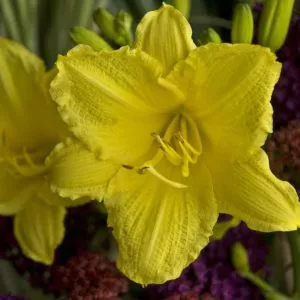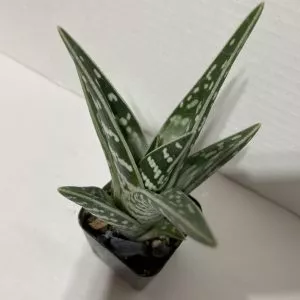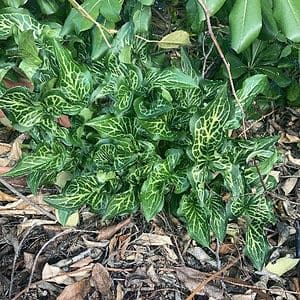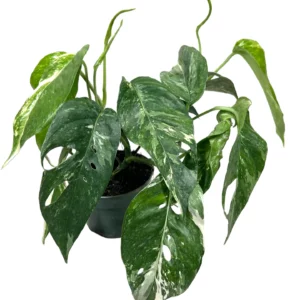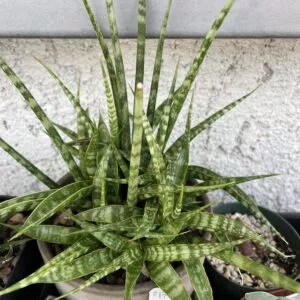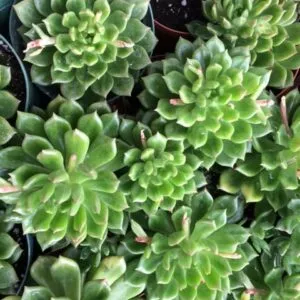No products in the cart.
Table of Contents
Did you know that Lemon trees are significant in most processes? To mention, Lemon is utilized in the pharmaceutical business, food processing, cosmetics manufacturing, perfume manufacturing, and cleansing product manufacturing. But aside from that, I’m here to tell you that these Lemon trees can be a great houseplant too!
And the Dwarf Lemon tree is the perfect suit for that!
What is a Lemon tree?
Meyer lemon trees are the hybrid fruit-bearing tree that combines the most remarkable qualities of lemons and mandarin orange. A Meyer lemon tree has lustrous, dark green foliage that is purple at the base and fragrant white blooms. Meyer lemon skins take on the color of an egg yolk when fully ripe—yellow with a faint orange hue.
It also has a pleasant aroma and is a common item among cooks.
Want to plant Meyer Lemon tree indoors? You don’t just get to have your own lemons, but also a great view of a houseplant! Read below to find out more.
Dwarf Lemon Tree Plant Care Basics
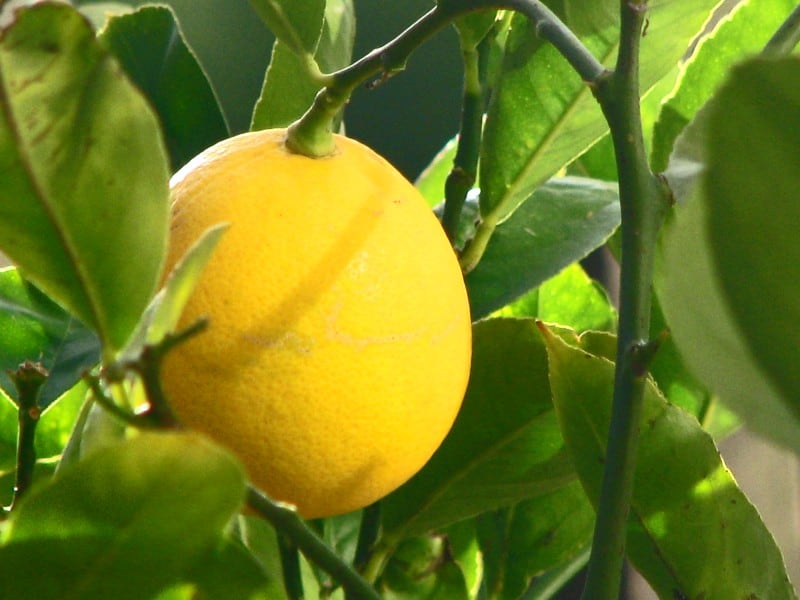
Before anything else, getting to know more about the outdoor plant we want to grow is essential. That is why we’ve provided a table down below.
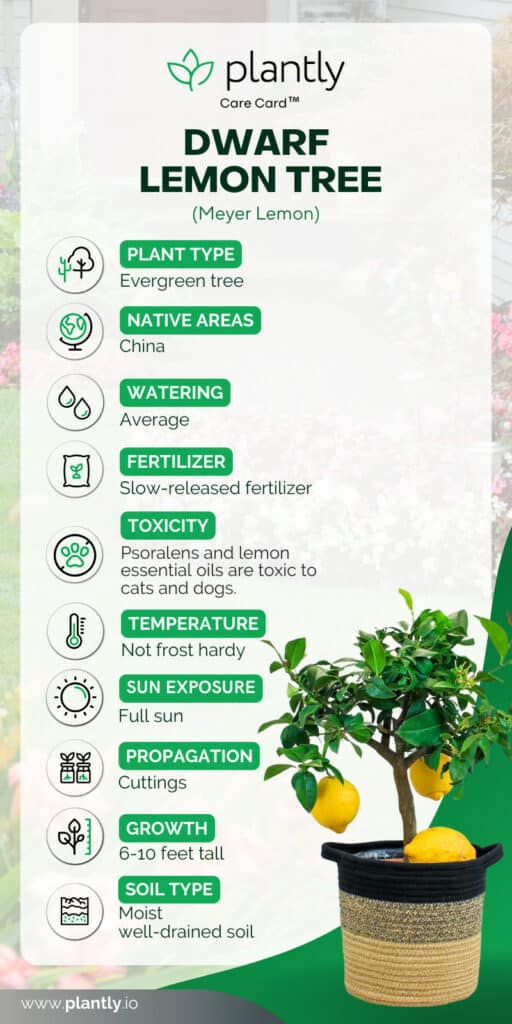
Already knew these Meyer Lemons? Let’s get started in learning how to take care of these fruit trees! Enjoy reading!!
Recommended Potting mix
Meyer lemon trees aren’t that picky with soil as long as it drains correctly. They thrive in loamy or sandy soil and prefer a pH range of 5.5 to 6.5. These mixtures keep roots from being too wet or too dry by preventing soggy soil while still retaining moisture.
Equal parts of garden soil, cocopeat, and compost can also be used.
Pro tip: To achieve the ideal pH level, amend the soil of your Citrus trees by adding sulfur to boost soil acidity or lime to lessen too acidic soil.
Lighting Requirement
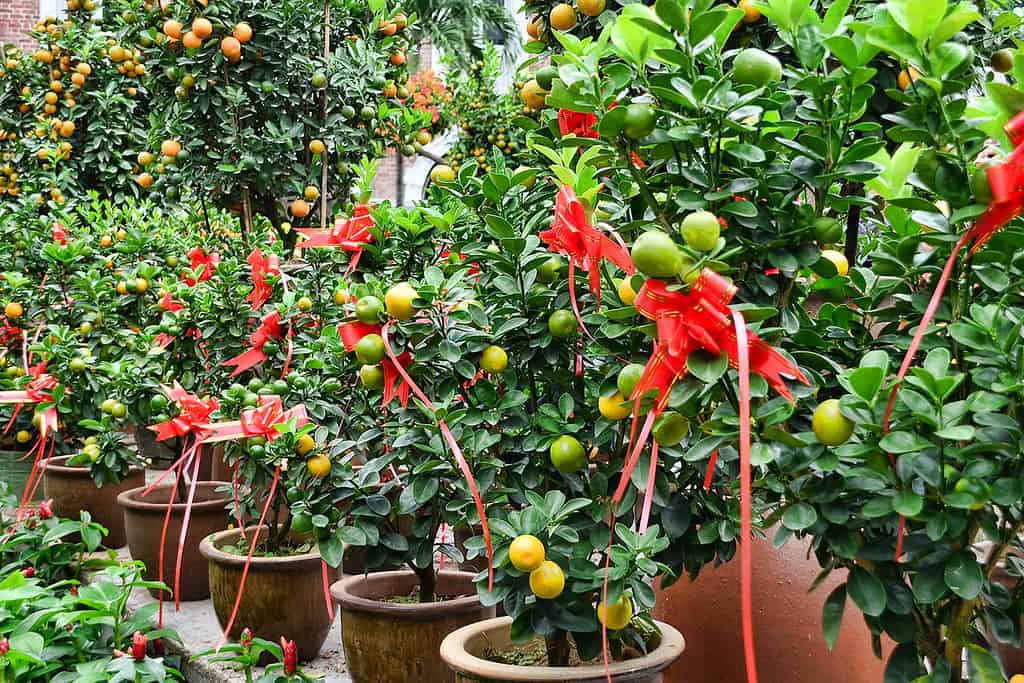
This Meyer lemon tree, like most Citrus trees, thrives when it receives enough direct sunlight. This involves getting at least eight to twelve hours of direct sunlight whenever feasible if treated as an outdoor plant. Though it can thrive in a somewhat gray area, it will grow and fruit best in full sunlight.
You can accomplish this easily by placing your plant near a window that faces south or southwest.
Pro tip: Indoor growing lights can produce the same photosynthetic benefits as direct sunlight, which may be an option.
Watering Needs
One of the most crucial components of nurturing any Citrus tree, especially those grown in pots, is proper hydration. Keep the soil around your Meyer lemon tree wet but not saturated. To do so, stick your finger into the soil up to the second knuckle to see if your plant needs to be watered.
If your fingers feel damp, hold off on watering. On the other hand, if your plant looks dry, water it until the water flows out the bottom of the container. Remember, lemon trees love moist soil, so do not let the mix dry out before watering.
Pro tip: Giving it too much or too little water might cause it to lose its blossoms and fruits, as well as cause the plant to die. Keep an eye out for danger indications like yellow leaves, which indicate damp roots or nutritional deficiencies.
Ideal Temperature & Humidity

The Meyer Lemon trees can thrive best if the temperature stays between 55 and 85 degrees Fahrenheit (10 and 25 degrees Celsius). Remember that Lemon trees are sensitive to both hot and cold drafts, so keep them away from any air conditioning or heating ducts.
Suppose you leave your Meyer lemon tree outside during winter, and the temperature drops below 50 degrees Fahrenheit (10 degrees Celsius).
In that case, you’ll want to bring it inside until the weather warms up.
On the other hand, Humidity levels must be 50%, and higher are ideal for Meyer Lemon trees. You can achieve this by filling a tray with pebbles, pouring water just below the tops of the rocks, then laying your pot on top of the rocks to raise the humidity surrounding the plant. You may also want to consider putting a tiny humidifier nearby as well.
Necessary Fertilizer
To produce fruit, luxuriant foliage, and fragrant blossoms, the Meyer Lemon tree might require fertilizer. Feed these lemon trees a slow-release all-purpose fertilizer during spring through fall.
Three applications throughout the growing season should be plenty to keep your plant happy, thriving, and producing.
Pro tip: Yellowing leaves indicate that your Meyer lemon tree needs to be fertilized.
Propagation
Other citrus trees are more difficult to propagate than lemon trees. And the Meyer Lemon tree is one of the lemon trees, so it’s easy to propagate! You can propagate this tree using semi-hardwood cuttings. The cuttings should be done in the late spring or early summer.
Without further ado, here’s how you will propagate it:
- Cut a piece of at least 3 to 6 inches long from a disease-free, mature mother plant.
- Remove all leaves, blooms, and fruit from the cutting, and save the top four leaves.
- To prevent rot or disease, you can dut it with a rooting hormone at the end of the stem.
- Nest, place it in a high-quality potting mix that has been carefully watered in a medium-sized pot (approximately 1 gallon).
- Place the cutting in the soil mixture, making sure that the cut end of the brand is completely buried.
- You may cover the entire pot with a plastic bag to keep the moisture in and place it in a well-lit area. Keep the soil moist and not waterlogged! You can spray the cutting every now and again until it grows new roots (usually two months).
- Once the roots have developed, remove the plastic covering and care for your plant as usual. You should keep it indoors or in a sheltered location until the next spring.
Growth Zone

The Meyer Lemon trees are hardy in USDA zones 9-11. If you don’t live in USDA growth zones 9 to 11, you should bring your plant indoors as soon as the temperature drops. However, they still need to be sheltered when temperatures drop below freezing.
You can use a covering that reaches all the way to the ground to help capture the heat from the soil.
Potting and Pruning
Plant your tree in a robust container that is one or two sizes larger than the one it arrived in. Double-check that the bottom of your container has drainage holes.
To keep your Meyer lemon tree healthy, preserve its structure and shape, and ensure that its branches can hold fruit, prune it regularly. Cut back the long leads (branches that don’t yield fruit) as they grow. The side branches will grow into that gap and strengthen to support the fruit’s weight. To enhance airflow between the branches, cut any branches that are developing toward the trunk.
In stock In stock In stock In stock
$28.49
Sold By:
Carlo's Plant Farm
2 Happy Return Daylilys | Carlo`s Plant Farm
Rated 5.00 out of 5 based on 22 customer ratings00
Sold By:
Carlo's Plant Farm
$9.99
Sold By:
Succulent Oasis
Small Succulent Plant Partridge Breast Aloe
Rated 4.84 out of 5 based on 352 customer ratings00
Sold By:
Succulent Oasis
$35.00
Sold By:
SunSoul Plants
$50.00Avocado seedling potted in 1 gallon pot, 2 years old
Only 2 available and it’s in 1 people’s basket Rated 4.87 out of 5 based on 98 customer ratings00
Sold By:
SunSoul Plants
$50.00
Sold By:
Southern Oak Exotics
Anthurium Warocqueanum Seedling
Only 18 available and it’s in 3 people’s basket
Sold By:
Southern Oak Exotics
Dwarf Lemon Tree Varieties and Similar Plant
Dwarf lemons also come in various kinds, each with its own set of motivations for being bred! Some are bred for their appearance, while others are bred for their taste and size.
Here are some of those varieties:
Dwarf Eureka Lemon
Because there was no hybridization in the manufacture of the Eureka lemon, this is considered a true lemon. You can also grow it as a container lemon tree or in a raised bed. The miniature Eureka lemon trees bear fruit and are widely available in local supermarkets.
When they are fully mature, they become a bright yellow color from a greenish-yellow. The fruits are generally accessible throughout the year. It also has a thick rind, which allows you to use the zest in cooking.
Dwarf Lisbon Lemon
These types of container lemon trees bear fruit all year and produce a large amount of fruit when it does. Lisbon lemon bears fruit that is also the same hue as Eureka’s. Lisbon lemons, on the other hand, are more enormous and have a pronounced nipple. While the juice is quite comparable to that of Eureka, Lisbons are much juicier. Dwarf Lisbons are also appealing to the eye.
The leaves are glossy and green, and the white blossoms have a lovely scent.
Dwarf Lemon Tree Plant Diseases & Pests
Pests
One of the Meyer Lemon tree care is to look out for pests. Whiteflies, rust mites, mealybugs, aphids, and scales are all common pests that attack Meyer lemon trees and citrus trees in general. While mature adult Meyer Lemons can usually resist one or two infestations, smaller, more vulnerable trees can be destroyed entirely by any of these problems.
Pest infestations are typically visible on the undersides of leaves or on the fruit.
Begin by trimming away any dead, unhealthy, or infected tree sections to control and remove pest problems. You can also spray the plant with diluted horticultural oil, such as neem oil, and reapply as needed. You can stop using it until all signs of infection have gone away.
Diseases
Citrus is also susceptible to bacterial and fungal infections. Huanglongbing, also known as HLB, yellow dragon disease, or citrus greening disease, is a relatively new and highly severe disease wreaking havoc on US citrus trees, both commercial and backyard. An infected tree cannot be saved and will eventually die.
The easiest way to avoid infection is to treat it immediately with neem oil, insecticidal detergent, or horticulture spray oil.
Melanose is also a fungus that can be controlled by trimming the afflicted parts. Small, dark blotches appear on the leaves, and scabbing appears on the fruit. If the illness is identified early enough, a fungicide may be beneficial.
Frequently Asked Questions
Lemon trees are not usually pruned to eliminate lower limbs but instead develop with branches that reach all the way to the ground, which has an impact on landscape design. A lemon tree’s spread can be equal to its height, resulting in a spread of 30 feet for standard-size trees. Dwarf trees can grow to be as small as 5 feet tall. Smaller trees can be planted directly in the ground.
Pruning your Meyer Lemon Tree is another technique to keep it happy. Meyer lemon trees don’t need to be tall to bear fruit; they only need to be healthy. Keep them fanned out and wide. Look for branches that are growing straight upwards when pruning your trees in the early fall or early spring
Although the size of the container helps to limit the eventual height of a tree, most indoor dwarf Meyer lemon trees develop to be at least 3 to 4 feet tall. Other indoor types can reach heights of up to 6 feet.
You can have your own Dwarf Lemon tree here at Plantly! Don’t miss this chance and avail our fast transactions online! Message us now!
Whether you want to buy, sell or simply reach out to other plant enthusiasts, Plantly is the right place to be!
-
Free Shipping$18.00Sold By: Bay Urban Habitat
Only 1 left in stock
Italian arum bulbs aka winter caladium
Only 1 available and it’s in 1 people’s basketSold By: Bay Urban Habitat -
$30.00Sold By: Gardengineering
$35.00In stock
Epipremnum Pinnatum Albo Variegata
Rated 4.96 out of 5 based on 24 customer ratings00Sold By: Gardengineering -
$12.00Sold By: Beauties & Beasts
In stock
Cactus Succulent- Sansevieria fernwood -Succulet
Rated 4.83 out of 5 based on 24 customer ratings00Sold By: Beauties & Beasts -
$9.99Sold By: Succulent Oasis
In stock
Medium Succulent Plant – Echeveria Sleepy Rich Green Rosette
Rated 4.84 out of 5 based on 352 customer ratings02Sold By: Succulent Oasis
